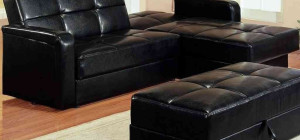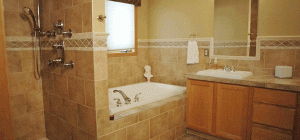When it comes to designing the perfect living space, many factors come into play, from color schemes and décor choices to lighting and overall room layout. However, one element that often gets overlooked but has a profound impact on the overall design and functionality of a home is furniture layout. How you arrange your furniture can significantly influence the look and feel of a room, as well as how well it serves its intended purpose.
In this article, we will explore the importance of furniture layout and how it can transform your living space into a more functional, comfortable, and aesthetically pleasing environment.
Creating Flow and Circulation
Furniture layout can greatly affect the flow and circulation within a room. When furniture is haphazardly placed, it can obstruct natural pathways and make a room feel cramped and awkward to navigate. On the other hand, a well-thought-out furniture arrangement can create a seamless flow, making the room feel more spacious and inviting.
To achieve a balanced circulation, consider the following tips:
a. Leave ample space for pathways: Ensure there are clear, unobstructed paths between furniture pieces, allowing easy movement through the room.
b. Pay attention to the scale: Choose furniture that is appropriately scaled to the size of the room. Oversized furniture in a small space can impede circulation, while too much small furniture in a large room can make it feel empty.
c. Use area rugs: Rugs can help define separate areas within a room and guide traffic flow. They also add a touch of visual appeal.
Maximizing Comfort
Comfort is a primary goal when designing your home, and the way you arrange your furniture plays a crucial role in achieving this. Proper furniture layout can create cozy, inviting spaces that encourage relaxation and socializing. Here are some considerations to keep in mind:
a. Conversational groupings: Arrange seating so that people can comfortably engage in conversation. This may involve placing furniture in a circle or around a central focal point, like a coffee table or fireplace.
b. Ergonomics: Ensure that the placement of furniture, such as sofas and chairs, promotes good posture and comfort. Properly chosen and positioned cushions and seating heights are essential.
c. Cozy corners: Create nooks or cozy corners with seating arrangements, throw blankets, and cushions. These spaces are perfect for reading, relaxation, or intimate conversations.
Enhancing Aesthetics
Furniture layout can significantly impact the aesthetics of a room. The right arrangement can highlight architectural features, draw attention to focal points, and create a harmonious visual balance. To enhance the aesthetics of your space:
a. Consider symmetry: Symmetrical arrangements, where furniture is evenly balanced on both sides of a central point, can create a sense of order and formality. Asymmetrical layouts, on the other hand, can add a touch of creativity and visual interest.
b. Highlight focal points: Arrange furniture to draw attention to a room’s focal point, whether it’s a stunning view, a fireplace, a piece of art, or a television. Placing seating facing these focal points can create an inviting atmosphere.
c. Balance proportions: Ensure that the size and scale of your furniture are proportional to the room. Large rooms can accommodate substantial furniture, while smaller spaces may benefit from more streamlined pieces.
Multi-Functional Design
In today’s homes, where space is often at a premium, furniture layout plays a crucial role in creating multi-functional areas. A room can serve various purposes, such as a home office, a guest room, and a play area, by strategically arranging furniture that is flexible and adaptable.
Consider these tips for multi-functional design:
a. Modular furniture: Invest in furniture that can be easily reconfigured to suit different needs. For example, a sofa with a pull-out bed can instantly transform a living room into a guest bedroom.
b. Dual-purpose pieces: Choose furniture that serves more than one function. Ottomans with hidden storage, dining tables that double as workspaces, and wall-mounted desks are great examples.
c. Space-saving solutions: In smaller homes, utilize vertical space with wall-mounted shelves and cabinets to maximize storage and keep the floor area clear for various activities.
Personal Expression
Furniture layout is a reflection of your personal style and preferences. The way you arrange your furniture can create a unique atmosphere that aligns with your taste and personality. Here are some ideas to infuse your personal expression into your home design:
a. Mix and match: Don’t be afraid to mix different furniture styles and materials to create a distinctive look. Eclectic arrangements can add character and charm to a space.
b. Display personal items: Use your furniture layout to showcase personal items, such as family photographs, artwork, and collectibles. Open shelving and well-placed wall art can help achieve this.
c. Color coordination: The color of your furniture and its arrangement can influence the overall mood of the room. Experiment with color palettes that resonate with your style.
Adaptation to Lifestyle Changes
Furniture layout isn’t a one-time decision. As your lifestyle changes, so too should your furniture arrangement. Whether you’re welcoming a new family member, working from home, or accommodating elderly relatives, your furniture layout should be adaptable.





![Are You a Secret Hoarder? [Infographic]](https://lerablog.org/wp-content/plugins/wp-thumbie/timthumb.php?src=http://lerablog.org/wp-content/uploads/2014/11/Nation-of-Clutter-IG-v21.png&w=300&h=140&zc=1)



